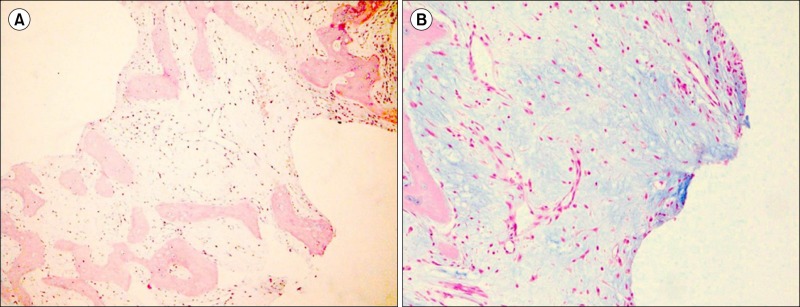
A 52-year-old woman with a history of hepatocellular carcinoma with bone metastasis (T6, L5-S1) was referred for pancytopenia after undergoing radiation therapy and transarterial chemoembolization. Splenomegaly and compact lipiodol retention in liver segment V was found on computed tomography. Her hemoglobin level was 10.8 g/dL; platelet count, 23,000/µL; white blood cell count, 1.9×103/µL; and mean corpuscular volume, 87.1 fL. The leukocyte differential smear revealed 48.6% segmented neutrophils, with toxic signs; 24.4% lymphocytes; 24.4% monocytes; 1.3% eosinophils; and 1% basophils. Normocytic normochromic anemia with frequent fragmented red blood cells was diagnosed. A bone marrow (BM) aspirate revealed trilineage hematopoietic components with prominent toxic granules in granulocytic series and poorly stained acellular material. BM biopsy showed a hypocellular marrow (10% cellularity); remarkable fat atrophy; and extracellular deposits of amorphous, smooth, pinkish (A, hematoxylin-eosin staining, ×100), and bluish (B, Alcian blue staining, ×200) gelatinous material that was negative on periodic acid-Schiff staining. These features were consistent with BM gelatinous transformation. The patient died of multiorgan failure and metabolic acidosis 5 days after the BM examination. BM gelatinous transformation, also known as "starvation marrow," can be induced by severe malnutrition in patients with malignancies, anorexia nervosa, malabsorption, and alcoholism.




 PDF
PDF ePub
ePub Citation
Citation Print
Print


 XML Download
XML Download